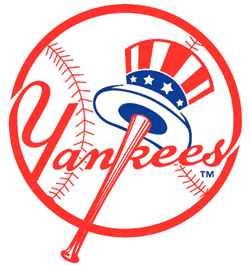 Acquiring Ichiro Suzuki for the remainder of the 2012 season may have helped the New York Yankees on the field, but the Japanese star should help the team’s bottom line for the rest of the season — unless something goes dramatically wrong.
Acquiring Ichiro Suzuki for the remainder of the 2012 season may have helped the New York Yankees on the field, but the Japanese star should help the team’s bottom line for the rest of the season — unless something goes dramatically wrong.
The Wall Street Journal looked at the financial impact of the Ichiro trade, framing the impact in terms of sponsorship dollars, and based on some expert advice, concluded the impact on the team’s bottom line should be minimal. Now, it’s true that this late in the season the Yankees are unlikely to pick up any big, new sponsors: yes, some additional signage may be purchased, but we’re not talking about enough to cover the $7 million or so remaining on Ichiro’s contract. The conclusion: “So while the trade of Ichiro to the Yankees is undeniably good for baseball, it’s not the kind of windfall for New York that many think it is.”
Which is a load of hooey: hang around baseball long enough and you’ll hear lots and lots of MLB front-office types downplay finances, downplay economic impacts and evade issues of exactly how much money an MLB makes and spends. Some simple number-crunching shows exactly how good a trade this is for the Yankees.
The Yankees are one of the few teams in baseball that could leverage the acquisition of an Ichiro Suzuki in a meaningful way, and that fact is related to one key stat: averaging 42,718 fans a game — at a relatively anemic 84.9 percent of capacity — the Yankees have a lot of upside to being in serious revenue by selling a lot more seats. Let’s say the team sees a surge at the box office of 5,000 more fans a game: a not unrealistic number when you consider Ichiro is still a major draw in the Japanese baseball community, which is well-represented in New York City. The Yankees have 34 games left, and if you add 5,000 more fans a game because of the signing, that’s 170,000 additional seats sold, and $8.5 million in additional revenue (assuming $50 per ducat). That, of course, is more than enough to pay Ichiro’s salary, never mind the money the additional money fans will spend at the ballpark — fans that can be served by the Yankees without adding more staff or overhead. So the chance to both profit and improve the team’s roster is very, very real.
There are very few contending teams in baseball that could have leveraged such an acquisition: maybe the White Sox, maybe the Angels, but certainly not the Giants (already playing at 99.5 percent of capacity) or the Cardinals (playing at 95.2 percent of capacity). We’re surprised to see the Dodgers weren’t interested in such a low-risk trade: playing at 73.6 percent of capacity and sponsorship slots surely available, there’s a lot of upside both this season and next.
“The Yankees have a bit of ticket inventory, not a great deal, but a bit of inventory,” Marc Ganis told the Wall Street Journal in one of the biggest understatements of the year: most smart businesspeople would call playing to only 84.9 percent capacity as having a tad more than just a “bit” of ticket inventory. Of course, adding 5,000 more fans a game is a big if, but this sort of bet is what separates the winners from the meek.
—-
Share your news with the baseball community. Send it to us at editors@augustpublications.com.
Are you a subscriber to the weekly Ballpark Digest newsletter? You can sign up for a free subscription at the Newsletter Signup Page.
Join Ballpark Digest on Facebook and on Twitter!
Follow Ballpark Digest on Google + and add us to your circles!
